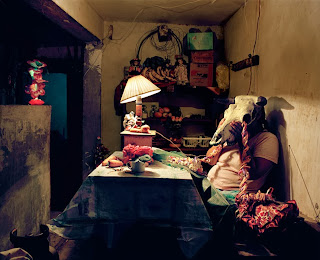.jpg)
New work from Sara Cwynar, a talent we love and whose earlier work we profiled in May.
Further exploring ideas of personal history through photographs both taken and found, the new work moves towards more conceptual ideas, leaning more on repurposed vintage advertising and editorial imagery than before. The 'floral arrangement' pieces, perhaps the standout images, are made from loaded compositions using everything from flora to stationery to shoelaces to duct tape to old darkroom equipment photographed on blown up vintage photos of traditional flower arrangements. The effect is disorientating as 2D and 3D blur into one, objects tinged with nostalgia beginning to emerge from the images the closer you look.
Other images are more elusive and harder to read, where she builds strange low fi, sci-fi versions of buildings like the Acropolis from styrofoam cups, or scans and distorts pages from photography darkroom manuals.


.jpg)
.jpg)



.jpg)
.jpg)
.jpg)
.jpg)
.jpg)
.jpg)



















































